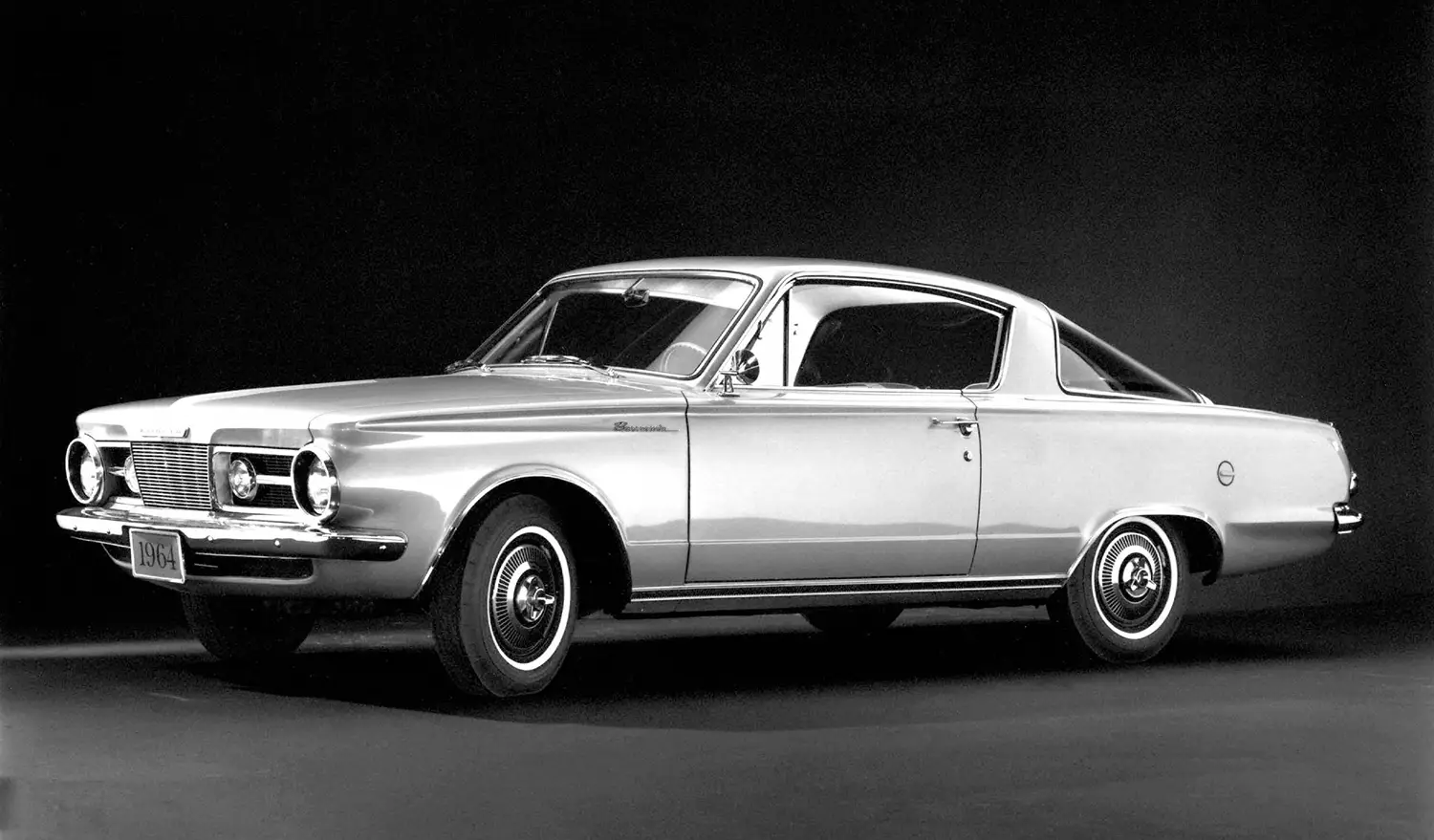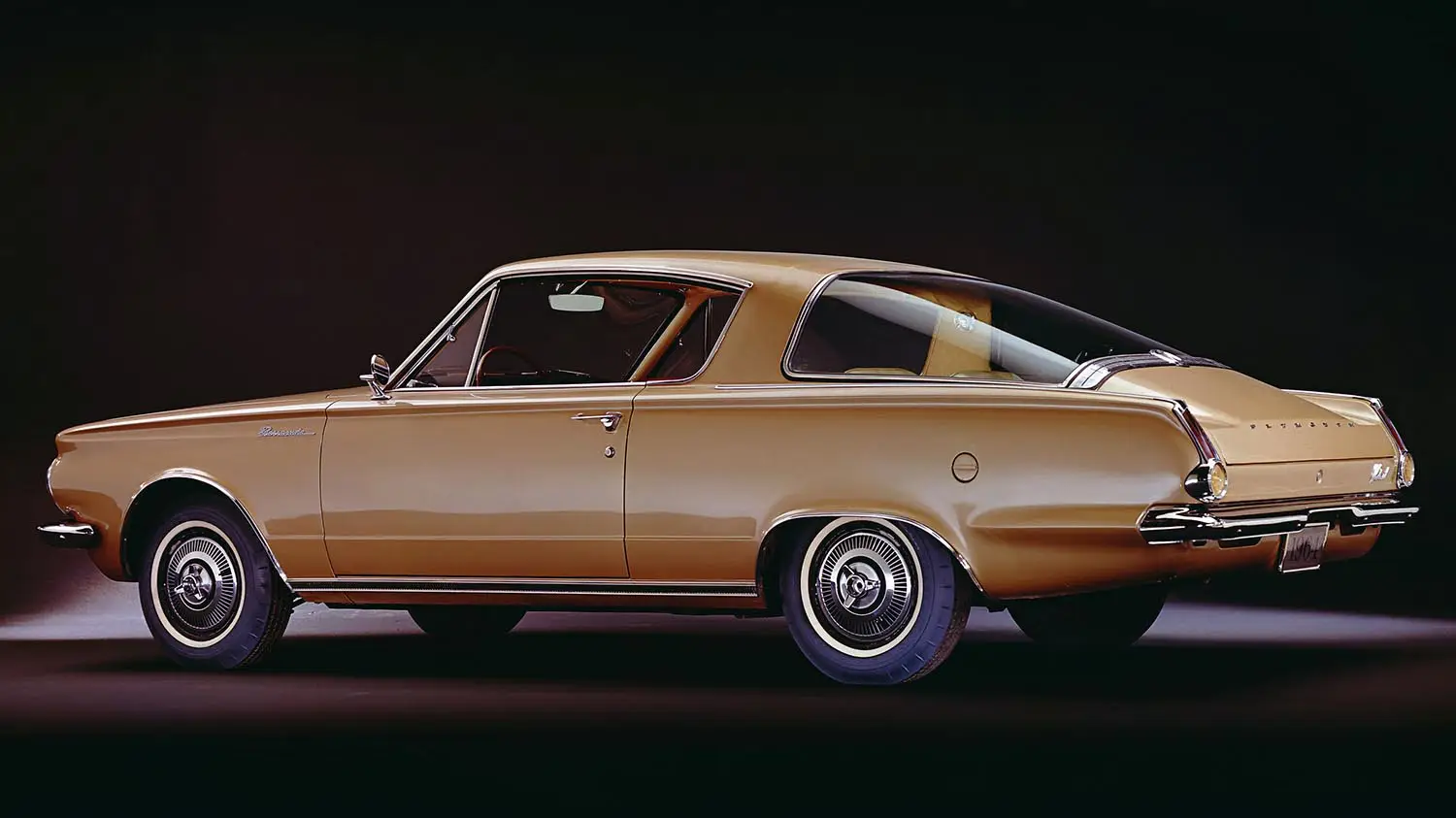
The dawn of the 1960s was a period of rapid change in American culture, and Detroit was keenly tuned in. Young buyers demanded something sportier, more compact, and affordable than the traditional full-size models. This fervent desire for a new type of vehicle led to the creation of the pony car segment, and its true genesis can be traced directly to the 1964 Plymouth Barracuda.
The Race to Market: The Original Pony Car
In the spring of 1964, the automotive world was preparing for a sensation. While the Ford Mustang would capture the public’s imagination a few weeks later, it was Plymouth that officially launched America’s first pony car. The Barracuda made its debut on April 1, 1964, a crucial head start that cemented its place as a true pioneer. This timing, however, was born more from efficient budgeting than raw ambition.
Designing the Distinguished Fastback Shape
Chrysler Corporation, with limited development funds due to other projects, based its sporty compact on the existing A-Body platform of the reliable Plymouth Valiant. The engineers cleverly used the Valiant’s cowl, windshield, hood, and doors. This strategy saved considerable time and money, allowing Plymouth to beat its rivals to the showroom floor. The distinguishing fastback roofline, however, was all new and entirely unique to the Barracuda.
An Engineering Feat: The Glass Back Predator
The single most defining feature of the 1964 Plymouth Barracuda was its dramatic rear glass. This massive, curved piece of glass measured 14.4 square feet. It was the largest single window ever installed on a standard production car up to that point. This engineering collaboration with Pittsburgh Plate Glass (PPG) gave the car its unmistakable silhouette.
The Interior’s Versatile Focus
The Barracuda’s unique fastback shape was not just a styling statement. It also lent itself to impressive practicality. The rear bucket-style bench seat was designed to fold forward, creating a cavernous, seven-foot-long cargo area. This emphasis on utility distinguished the Barracuda from its future competitors. The interior also featured front bucket seats and a distinctive dashboard layout, providing a genuine “sports car” feel.
Performance Foundations: The Engine Lineup
Under the sweeping hood, the 1964 Barracuda shared its initial engine options with its Valiant cousin. Buyers had a choice of two versions of the venerable Slant-Six engine, renowned for its tough reliability. Although these six-cylinder options offered modest performance, the option list held the key to unlocking the car’s sporting potential.
The Vital V8 Option and Its Impact
For those seeking true performance, Plymouth offered the all-new 273 cubic-inch LA V8 engine. This compact, relatively lightweight V8 utilized a two-barrel carburetor and delivered a solid 180 horsepower. This power plant was crucial, as nearly 90% of all Barracuda buyers opted for this engine in the inaugural year. This choice signaled the market’s clear desire for performance beyond simple compact car efficiency.
The 1964 Barracuda’s Legacy and Collectibility
Although the Barracuda’s initial sales numbers were eclipsed by the phenomenal success of its competitor, its importance cannot be overstated. The 1964 Plymouth Barracuda set the stage for one of the most exciting and transformative segments in American automotive manufacturing. It proved that a dedicated sporty coupe could be successfully spun from a compact platform.
Technical Specifications and Power
The base engine was the 170 cubic-inch Slant-Six, delivering 101 horsepower at 4400 RPM and 155 lb-ft of torque. The popular optional engine was the 273 cubic-inch V8. This V8 produced 180 horsepower at 4200 RPM and 260 lb-ft of torque at a low 1600 RPM. Transmissions included a standard three-speed manual, an optional four-speed manual, or the three-speed Torqueflite automatic. Its 106-inch wheelbase and drum brakes all around were characteristic of the era, offering an authentic 1960s Mopar experience.
Summary: A Market Spotlight on Innovation
The 1964 Plymouth Barracuda remains a crucial artifact of automotive innovation. It was a resourceful answer to a burgeoning market demand, showcasing a distinctive and elegant fastback design built on a practical foundation. Its massive rear glass, its fold-down seat utility, and its pioneering status as the first-to-market pony car secure its legendary status. The Barracuda was more than just a modified Valiant; it was the foundation upon which Plymouth’s high-performance Mopar reputation was first established.
Disclaimer: Content on this site is for informational purposes only. Vehicle specs, pricing, and availability may change. Always verify details with official sources before making decisions. Opinions are those of the authors.
Source: Stellantis

